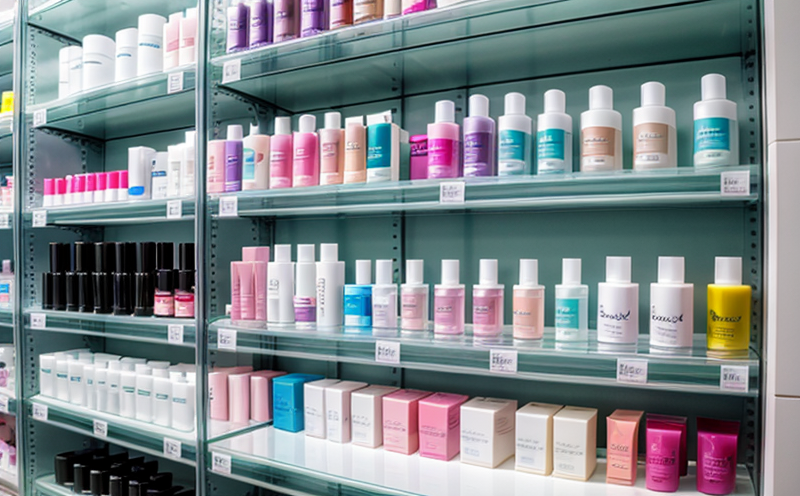Analytical Stability Testing using HPLC in Cosmetics
The analytical stability testing of cosmetic formulations is a critical process that ensures product integrity and compliance with international standards. This service involves evaluating how various components within a cosmetic formulation behave over time under different environmental conditions. The primary objective is to determine the shelf life and overall stability of the product, ensuring it remains safe for consumers and meets regulatory requirements.
Cosmetics are composed of numerous ingredients that can interact in complex ways, especially when exposed to temperature changes, humidity, light, or other environmental factors. Analytical Stability Testing using High Performance Liquid Chromatography (HPLC) plays a pivotal role in this process by providing precise and accurate data on the breakdown products and degradation pathways of cosmetic components.
During analytical stability testing, samples are subjected to controlled conditions that simulate real-world storage environments. This includes exposure to high temperatures, humidity cycles, and light. After defined periods, these samples undergo HPLC analysis to assess changes in chemical composition. The data obtained helps identify any degradation products or shifts in ingredient concentrations, which can indicate potential issues with the formulation's stability.
High Performance Liquid Chromatography (HPLC) is particularly suited for this task due to its ability to separate and quantify complex mixtures of compounds within a cosmetic formulation. This precision ensures that even minute changes can be detected early in the product lifecycle, allowing manufacturers to make informed decisions regarding quality control and regulatory compliance.
The analytical stability testing process typically involves several steps: sample preparation, HPLC analysis, data interpretation, and reporting. Sample preparation requires careful selection of representative samples from various batches or production runs. Once prepared, these samples are exposed to specific environmental conditions for varying durations before undergoing HPLC analysis. The results are then compared against baseline data collected under standard storage conditions.
During the testing process, it is crucial to adhere strictly to established protocols and methodologies outlined in relevant international standards such as ISO 28039-1:2017 for stability testing of cosmetic products. Adherence ensures consistent results across different laboratories and facilitates easier comparison between studies conducted by various organizations.
The accuracy and reliability of analytical stability tests directly impact the trust consumers place in their favorite brands. By ensuring high-quality standards through rigorous testing procedures, manufacturers can maintain consumer confidence while also complying with stringent regulatory requirements imposed by authorities worldwide.
| Applied Standards | Description |
|---|---|
| ISO 28039-1:2017 | Stability testing of cosmetic products - Part 1: General requirements and procedures for stability testing. |
| ASTM D6540 | Standard practice for stability testing of materials. |
Environmental and Sustainability Contributions
Minimizes waste by identifying degradation issues early in the product lifecycle, preventing unnecessary batch rejections.
Saves resources through efficient use of raw materials and energy during production processes.
Reduces environmental impact by extending shelf life and ensuring longer-lasting products that require fewer replacements.
The analytical stability testing process not only benefits the immediate cosmetic industry but also contributes positively to broader sustainability goals. By reducing waste, conserving resources, and promoting longer-lasting product designs, this service aligns with global efforts towards more sustainable practices within various sectors.
Use Cases and Application Examples
The analytical stability testing of cosmetic formulations using HPLC is widely used across the industry for several key applications. One common use case involves monitoring changes in active ingredient concentrations over time, ensuring they remain within acceptable limits specified by regulatory bodies like the FDA or EU Cosmetics Regulation.
Another critical application pertains to evaluating how excipients—non-therapeutic components like preservatives, emulsifiers, and colorants—affect overall stability. Understanding these interactions allows for better formulation design and optimization, leading to improved product performance and safety.
In addition to these core uses, analytical stability testing also supports research and development efforts aimed at creating innovative formulations with enhanced efficacy or sustainability features. For instance, researchers can use this service to explore new delivery systems or encapsulation techniques that extend shelf life without compromising effectiveness.





